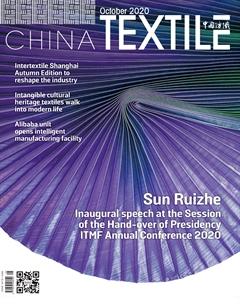Why is Bangladesh overtaken by Vietnam in global garment exports?
by Zhao Xinhua
Vietnam surpasses Bangladesh to become the worlds second largest garment exporter
According to statistics from the Bangladesh Garment Manufacturers and Exporters Association (BGMEA), from July 2019 to June 2020, Bangladeshs garment exports were USD 27 billion, and Vietnams garment exports reached USD 30 billion. Vietnam surpassed Bangladesh to become the worlds second largest garment exporter.
In the past ten years, Bangladesh and Vietnams garment exports have been comparable in competitiveness. However, Bangladesh mainly exports low-priced clothing. Vietnam mainly exports high-priced clothing. Affected by the COVID-19 pandemic, Bangladeshs garment exports fell by 18.12% in the last fiscal year. During the same period, Vietnams garment export revenue fell by 3.09%.
The Bangladeshi garment industry believes that the free trade agreement signed by the EU and Vietnam in June last year will effect next summer. In addition, Chinese investment in Vietnam has played an important role in promoting the countrys garment exports. These are all positive factors for the growth of Vietnams garment exports.
Vietnams garment exports have not only surpassed, but also have growth momentum
The EU is not only Vietnams second largest export market, but also the worlds largest importer of ready-made garments for a long time. The “Vietnam-EU Free Trade Agreement” took effect on August 1st. According to Vietnamese media reports, Vietnams export value is expected to increase by 42.7% from 2020 to 2025. Among them, the growth of garment textile exports will reach 81%.
China is Vietnams largest trading partner and an important source of foreign investment for Vietnam. According to statistics from the Vietnamese customs department, in the first half of 2020, Chinas investment in Vietnam (excluding investment from Taiwan) was USD 1.58 billion, ranking third. As the worlds largest exporter of textiles and garments, Chinas investment in Vietnam by Chinese textile and garment enterprises is also increasing due to factors such as rising domestic labor costs.
What is the reason for the slowdown in Bangladeshs exports?
According to official statistics, garment exports account for more than 80% of Bangladeshs total merchandise exports, and more than 4 million people are employed. The textile and garment industry is vital to Bangladeshs economic development and peoples lives.
In fact, Bangladeshs garment exports have been declining. Bangladesh has closed nearly 1,200 small garment factories in the past few years. At the same time, the countrys garment has not met the strict compliance set by international retailers and brands, and the price is not particularly low.
The slowdown in export growth reflects the decline in the competitiveness of Bangladeshs RMG industry.
From July to November in the 2019 - 20 fiscal year, Bangladeshs garment exports fell by 7.74%. According to the latest information, Vietnams exports from July to Octo-ber 2019 increased by 6.41%.
There are also the following reasons for the slowdown in Bangladeshs exports:
●Workers wages have risen. Bangladesh raised the minimum wage in December last year, which greatly increased labor costs.
●Low efficiency and relatively high cost of doing business are also reasons for Bangladeshs insufficient trade competitiveness.
●The concentration of the industry is too high, the price war is fierce, and Bangladeshs order prices are very low.
●The industry is sluggish. From January to November 2019, the Bangladesh garment industry closed 61 factories and laid off 31,600 employees.
Is it possible for Vietnam to “become the worlds factory”?
Currently, Vietnam is still seeking a higher position in the global apparel export market. Recently, the free trade agreement between Vietnam and the European Union came into effect on August 1st. Before the agreement entered into force, Vietnam had expected it to help surpass Bangladesh to become the worlds second largest export market for textiles and apparel. Due to the pandemic, this goal was reached ahead of schedule.
But the purpose of Vietnam is obviously not that simple. In the past 10 years, Vietnams GDP has maintained a high-speed growth rate of 7%, and the pace of integration into internationalization has been accelerating. So far, Vietnam has signed 13 bilateral and multilateral free trade zone agreements. Vietnams trade volume has achieved a huge breakthrough. Vietnams total import and export volume in 2019 reached USD 517 billion, an increase of 7.6% over the previous year, which is equivalent to twice the 2019 GDP. “Vietnam must become the worlds factory”, an important Vietnamese official said publicly at the ministerial meeting in January this year.
Garment is Vietnams third largest export commodity. Since Vietnam hopes to become a “world factory”, it will inevitably find ways to occupy more of the apparel export market, which is the only way for its develop- ment. However, during the development process, Vietnam will also face many difficult problems. For example, 55%- 60% of garment raw materials are imported from the Chinese market. However, according to the free trade agreement with the EU, Vietnam must use the EU or its own raw materials to enjoy the garment export preferences, otherwise the preferences will be cancelled.
From the perspective of the entire apparel industry, Vietnam mainly occupies the “assembly” link in the industrial chain. Raw materials, textile parts and other products are not yet self-sufficient. Therefore, it is very difficult for Vietnam to further enhance its position in global apparel market.
The garment industry is a low-end manufacturing industry, which also reflects the status quo of Vietnams manufacturing industry-more relying on cheap labor to develop processing industries without a complete industrial system, which determines that it may become a part of the“world factory” instead of the heartland.
- China Textile的其它文章
- PEACEBIRD Fashion Headquarter—a new China fashion landmark
- 2020 Ningbo fashion festival kicked off on October 22nd
- 31st edition of Milano Unica:A bold signal of a comeback
- “Nothing New, Everything New”:Heimtextil presents the 2021/2022 trends
- The cotton import sliding-scale duty quotas have shrunk by half this year,and the changes worthy of attention are more than this!
- Livestream:economic bubbles or the path to rich?

